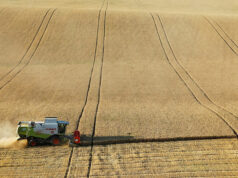DoST touts hybrid abaca advantages
GOVERNMENT researchers said hybrid abaca has some advantages in spinning fabric because of its finer fibers.
The Philippine Textile Research Institute (PTRI) of the Department of Science and Technology (DoST) said in a statement: “As fiber inputs to yarn production, the critical parameter is fiber fineness. After pre-treatment, the S2 grade abaca has a fiber fineness of 296 D. Hybrid abaca (H7), on the other hand, is almost three times finer at 117 D. This fiber redounds to more efficient spinning performance, thus, higher productivity in yarn manufacture,” PTRI said.
D or Denier is a measurement used to define fiber linear mass density expressed as the mass in grams of 9,000 meters of fiber.
The Philippine Fiber Industry Development Authority (PhilFIDA) defines S2 as a normal grade of hand and spindle/machine stripped abaca fiber extracted from next to the other leaf sheath, with a fiber strand of 0.20 to 0.50 millimeters (mm), with a color of ivory white, slightly tinged with very light brown to red or purple streak, which stripping quality is categorized as good, and the texture soft.
According to PTRI, hybrid abaca offers reduced fabric stiffness, decreases the yarn’s torsional rigidity, eases in the spinning process, and results in more luster, better dye absorption, and greater uniformity in yarn and fabric.
The PTRI noted that yarns produced using the cotton system show that at a 75% cotton and 25% abaca blend, the S2 grade can reach 8.7 Ne while the hybrid abaca can spin up to 11 Ne.
Ne represents yarn count; the higher the number, the finer the yarn.
“Final yarn composition also show that there is better uptake of abaca during yarn production. The S2 resulted in 83% cotton/17% abaca in the blend while the hybrid efficiently maintained a 76% cotton/24% abaca in the blend,” the PTRI said.
The DoST said hybrid abaca is still in its research stage and is not yet available for marketing, and distribution of planting materials is prohibited.
Last week, PhilFIDA Executive Director Kennedy T. Costales called on the University of the Philippines Los Baños — Institute of Plant Breeding (UPLB-IPB) and the Philippine Council for Agriculture, Aquatic, and Natural Resources Research and Development (PCAARRD) to stop its joint research project on the cross breeding of pacol — a form of wild banana — and abaca and instead should focus on breeding a true-to-type abaca varieties. — Reicelene Joy N. Ignacio



